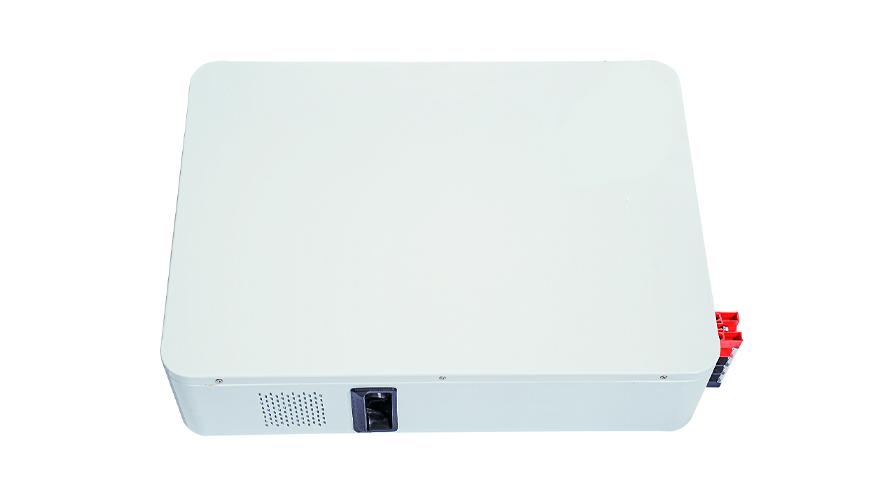The battery is one of the main components of the photovoltaic power station. It is used for energy storage, that is, the power energy provided by solar batteries is converted into chemical energy and stored in it. Generally speaking, the battery is charged by the solar cell array during the day, and the battery is powered by the battery at night. Today, what kind of solar cell battery is good? What is the difference from ordinary batteries?

1. What is solar battery?
The photovoltaic power generation system is a power generation system that uses the principle of photoelectric effect to convert solar energy to electrical energy. It is usually composed of solar cell components, controllers, battery packs, DC/AC inverters. Solar batteries are applied to solar photovoltaic power generation. The main task is storage energy to ensure load electricity in night or rainy days.
2. What kind of solar battery is good?
Battery is the main accessory in the solar power supply system. From the perspective of the cost structure of the energy storage system, the cost of battery module accounts for about 60%, and the service life of the energy storage battery is lower than that of solar components. The average service life of solar components is 25 years. The average life of energy storage batteries is 5-8 years, and it needs to be replaced regularly, which increases the cost of use.
According to market status and battery characteristics, the battery selection of the power supply system is recommended to be lithium iron phosphate batteries. The energy storage efficiency of the new type of energy storage can be increased to 95%, which can significantly reduce the power supply cost. The current commonly used lead -acid batteries have only about 80%of the energy efficiency. The weight of lithium phosphate batteries is lighter, longer service life, good high temperature stability, 700-800 ° C will be broken down, and oxygen molecules will not be released when impacting, acupuncture, short circuit, etc. Burning, high safety performance, the number of charging and discharge can reach 1,600 cycles, which means that it does not need to be replaced frequently.
Third, the use and maintenance of solar batteries.
- The right temperature is 15 ~ 20 ℃;
- The method of connecting solar batteries is to connect the positive electrode of the solar battery with the positive electrode, negative electrode and negative electrode. In this way, the power of solar batteries will double, and the voltage is the same as the voltage of a solar battery. Solar battery bipolar columns should not be short -circuited (meet);
- For the newly charged solar battery after the new installation or renovation, a long period of charging is performed. For the first charging, the current should be charged at a current of 1/10 of the rated capacity. Before installation, you must measure whether the battery is sufficient. If the electricity is insufficient, please charge the battery for more than 8-16 hours in the sunny place or use the AC power to sufficient the battery to be strictly avoided. When charging normally with AC power, it is best to use a hierarchical charging method, that is, the average current charging with a large current at the beginning of the charging, and the conventional charging voltage and constant voltage for a certain period of time.
- Keep the battery clean. Installed solar battery pillars should be applied to Vaselin to prevent corrosion of polar pillars;
- Configure online monitoring and management technology for solar batteryconfiguration, internal measurement and analysis of solar batteries, timely detect the defects of batteries, and maintain timely maintenance;
- Prevent solar batteries in winter to freeze and crack, avoid direct sunlight in summer, solar batteries should be placed in ventilation and cold.
Fourth, the difference between solar batteries and ordinary batteries
Solar batteries are improved on the basis of ordinary batteries. Add SIO2 to the original technology to make the battery resistance to low temperature, higher safety, better stability, and longer service life. Therefore, it is suitable for the use of bad weather, making the use of solar -specific batteries more targeted. Some of them use lead -acid batteries on solar energy, and some use better lithium batteries or nickel -metal hydride batteries with better performance.
Because the method of charging/discharge is different, the requirements of solar cells and ordinary lead -acid batteries are different:
- Charging: The electric energy of solar cells comes from the sun, but the current of charging the battery with sunlight is small, so the area of the pole plate is not high;
- Discharge: Solar batteries are generally supplied to small -power electrical appliances such as street lights, so the discharge current is also small;
- Due to the small charging current, it is not required to be thin -plate technology;
- Solar batteries have long floating charging life and cycles, so they are generally rich in liquid batteries, while ordinary batteries are poverty.
What kind of detailed introduction to the above is the solar battery, I believe everyone has a certain understanding. In terms of advantages, solar batteries have better deep circulation capabilities and have good overcoming and over -release capabilities. Different environmental requirements, such as high altitude, high temperature, low temperature and other batteries that can be used normally under different conditions.
